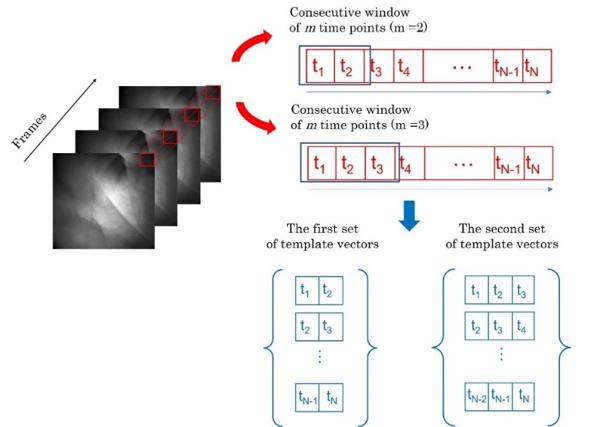A Laser is a light source that emits coherent and monochromatic light through an amplification process based on the stimulated emission of radiation. A typical characteristic of a laser is the speckle pattern observed in the illuminated spot, which is an irregular granular pattern caused by the diffuse reflection of highly coherent light. When an object under illumination moves, this speckle pattern fluctuates both spatially and temporally. A laser speckle imaging (LSI) system captures the speckle pattern and analyzes it to measure object movements.
In biomedical applications, the LSI system is utilized to measure blood flow by calculating the speckle contrast, the ratio between the standard deviation of speckle fluctuations, and the average speckle intensity. However, patient movement during measurement can cause unexpected speckle fluctuations. The research group led by Prof. Jae Gwan Kim from the Gwangju Institute of Science and Technology researched sample entropy-based speckle contrast calculation as an alternative method to traditional speckle contrast calculation to reduce the influence of the patient movement. The research results are published in Chinese Optics Letters, Volume 20, Issue 1, 2022 (S. Kim, et al.,Sample entropy analysis of laser speckle fluctuations to suppress motion artifact on blood flow monitoring).
Sample entropy is an entropy family that tries to quantify the similarities or trends in physiological time-series signals. Sample entropy can quantify changes in blood flow because the fluctuations of speckle intensity result in variations in the similarity between neighboring time points depending on the distribution of temporal speckle intensity. The presented research shows sample entropy analysis instead of calculating standard deviations of the speckle fluctuations. Similar to the traditional method, sample entropy-based speckle contrast increases linearly with flow rate but was shown to be more immune to sudden movements, as shown in Figure 1.

Fig. 1 Schematic diagram of the sample entropy calculation sequence for LSI images.
Prof. Myeongsu Seong commented as follows. "LSI has been applied to many medical applications such as monitoring port-wine stain birthmarks, determination of systemic sclerosis, burn wound assessment, and so on. However, the very high vulnerability of LSI on the movement artifact hinders the translation of LSI to clinical settings. This study provides an excellent solution to overcome the effect of motion artifact on blood flow monitoring using LSI."
Prof. Kim also believes that sample entropy analysis is useful for monitoring blood flow compared to speckle contrast when movement is unavoidable during measurement. Therefore, it is expected that the application of sample entropy analysis will facilitate the translation of LSIs from bench to bedside. Future studies will focus on the explanation of sample entropy related to light scattering theory to provide theoretical support and comparative studies with other methods of minimizing the effects of patient movement.


